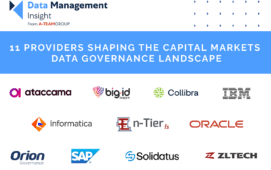Although enterprise data management (EDM) has gained popularity in the market, financial institutions are now considering the benefits of distributed data models, according to a recent report by analyst firm Aite Group. The report, entitled “EDM to DDM: Moore’s Law Rewards Centralised Data Procrastinators”, introduces the concept of distributed data management (DDM), and analyses the benefits of this data model compared to EDM or centralised data management.
Adam Honoré, senior analyst with Aite Group and author of this report, explains the evolution of the concept: “DDM extends out of the technology push associated with electronic trading. In-memory data caches, complex event processing engines, data fabrics, grid computing, and other advances have created opportunities to spread the data management responsibility back out over the enterprise and manage it effectively.” The report provides examples of how capital markets firms apply distributed caches, complex event processing engines, reference data solutions, grid computing, and messaging infrastructures to distributed data architectures. “EDM is based on a centralised data model, which rarely, if ever, truly realises its potential in large firms. DDM creates multiple sets of ‘truth’ where each version is unique to the subscriber and their needs. You don’t need to house the data universe in a single instance. You can break out by geography, product type, data type, however you want to manage ‘truth’,” says Honoré. The report indicates that despite the popularity of concepts such as golden copy through consolidating reference data under a single umbrella, many financial institutions have found flaws in the execution of such centralised data models. It accuses such models of contributing to latency, creating a single point of failure, experiencing significant integration pain, and requiring like data be used on disparate systems. These failures are a contributing factor as to why firms are looking to emerging technology to provide a single-source, multi-subscriber model spread over the enterprise, says the report. As the breadth and depth of data continues to grow, that flexibility will enable firms to support existing integration efforts in a more efficient method, add new systems into the data architecture without creating direct data dependencies, and create a fabric that allows the firm to create and destroy data marts for specific needs, it continues. The benefits of DDM include reducing latency, eliminating the potential of a single point of failure, reducing data ownership politics and the need to adopt an internal identifier schema and creating a more agile data infrastructure to accommodate larger volumes and a broadening dataset. “While Aite Group has found that most firms considering distributed data models are in early stages of the process, vendors admit that customers are increasingly exploring and building a case for the model,” says Honoré. “Centralised data models limit the agility of a firm to deploy new data capabilities that support emerging real-time needs. In time, Aite Group expects DDM to find itself in the acronym lexicon between CDM and EDM.” The industry is therefore taking notice of the concept of DDM but it is the economic climate that is affecting its take-up, according to Honoré. “The has been very little adoption, but I don’t think that is a buy-in issue. That’s more of a priority issue. The underlying technology is still busy trying to hit the speed of light for low latency trading. A select few firms have decided they have invested so much in the underlying technology that they should see what other advantages they can gain by reapplying the infrastructure to other challenges. I expect you’ll see more of this once firms start innovating again after their IT freeze thaws out,” he explains. When asked whether he believes DDM will take over from EDM as the overarching data strategy in the market, Honoré is cautiously optimistic. “EDM as a concept is about more than centralised data and underlying architecture. Do I expect the architectural components to start looking more like what I’m describing in DDM? Yes in larger firms. No in smaller firms because it isn’t necessary.” He continues: “Do I expect that changes anything about effective governance, the value of industry identifiers, or some of the less technical aspects of EDM? No, with one caveat. I would speculate DDM practitioners will find their data silos reduced at a much faster rate than traditional centralised practitioners, which invariably helps get faster exposure measurement. As we all know, exposure is a big issue these days.”
Subscribe to our newsletter




